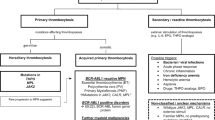Summary
The use of clozapine†, a unique antipsychotic drug, has been restricted due to a 1 to 2% incidence of drug-induced agranulocytosis. Many other drugs, including paracetamol (acetaminophen), can cause agranulocytosis, although with a much lower incidence. Metabolic activation of these drugs by neutrophils or stem cells could be the molecular mechanism underlying this adverse effect. Drug oxidation by myeloperoxidase leads to free radical metabolite formation; these reactive free radicals can oxidise glutathione to a thiyl free radical, which in the presence of oxygen forms oxygen-derived free radicals.
In contrast to glutathione, when these free radical metabolites oxidise ascorbate an unreactive free radical is formed, which does not even react with oxygen. In both reactions, the free radical metabolite is reduced to the original drug, although ascorbate is the more effective reducing agent. Thus ascorbate, when coadministered with agranulocytosis-causing drugs, may inhibit free radical chain reactions and other free radical-mediated reactions, such as protein adduct formation, and thereby prevent drug-induced agranulocytosis.
Similar content being viewed by others
References
Bielski BHJ, Richter HW, Chan PC. Some properties of the ascorbate free radical. Annals of the New York Academy of Sciences 258: 231–237, 1975
Fischer V, Haar JA, Greiner L, Lloyd RV, Mason RP. Possible role of free radical formation in clozapine (Clozaril®)-induced agranulocytosis. Molecular Pharmacology 40: 846–853, 1991
Fischer V, Harman LS, West PR, Mason RP. Direct electron spin resonance detection of free radical intermediates during the peroxidase catalyzed oxidation of phenacetin metabolites. Chemico-Biological Interactions 60: 115–127, 1986
Fischer V, West PR, Harman LS, Mason RP. Free-radical metabolites of acetaminophen and a dimethylated derivative. Environmental Health Perspectives 64: 127–137, 1985a
Fischer V, West PR, Nelson SD, Harvison PJ, Mason RP. Formation of 4-aminophenoxyl free radical from the acetaminophen metabolite N-acetyl-p-benzoquinone imine. Journal of Biological Chemistry 260: 11446–11450, 1985b
Harman LS, Carver DK, Schreiber J, Mason RP. One- and two-electron oxidation of reduced glutathione by peroxidases. Journal of Biological Chemistry 261: 1642–1648, 1986
Lacotte J, Perrin C, Mosquet B, Moulin M, Bazin C. Agranulocytosis caused by paracetamol. A case report (letter). Therapie 45: 438–439, 1990
Lloyd RV, Mason RP. Evidence against transition metal-independent hydroxyl radical generation by xanthine oxidase. Journal of Biological Chemistry 265: 16733–16736, 1990
Ohnishi T, Yarnazaki H, Iyanagi T, Nakamura T, Yamazaki I. One-electron-transfer reactions in biochemical systems II. The reaction of free radicals formed in the enzymic oxidation. Biochimica et Biophysica Acta 172: 357–369, 1969
Rao DNR, Fischer V, Mason RP. Glutathione and ascorbate reduction of the acetaminophen radical formed by peroxidase. Journal of Biological Chemistry 265: 844–847, 1990
Ross D, Albano E, Nilsson U, Moldéus P. Thiyl radicals — formation during peroxidase-catalyzed metabolism of acetaminophen in the presence of thiols. Biochemical and Biophysical Research Communications 125: 109–115, 1984
Sevilla MD, Yan M, Becker D, Gillich S. ESR investigations of the reactions of radiation-produced thiyl and DNA peroxyl radicals: formation of sulfoxyl radicals. Free Radical Research Communications 6: 99–102, 1989
Uetrecht J. Mechanism of hypersensitivity reactions: proposed involvement of reactive metabolites generated by activated leukocytes. Trends in Pharmacological Sciences 10: 463–467, 1989a
Uetrecht JP. Idiosyncratic drug reactions: possible role of reactive metabolites generated by leukocytes. Pharmaceutical Research 6: 265–273, 1989b
Author information
Authors and Affiliations
Additional information
Clozaril®/Leponex®
Rights and permissions
About this article
Cite this article
Mason, R.P., Fischer, V. Possible Role of Free Radical Formation in Drug-Induced Agranulocytosis. Drug-Safety 7 (Suppl 1), 45–50 (1992). https://doi.org/10.2165/00002018-199200071-00010
Published:
Issue Date:
DOI: https://doi.org/10.2165/00002018-199200071-00010




